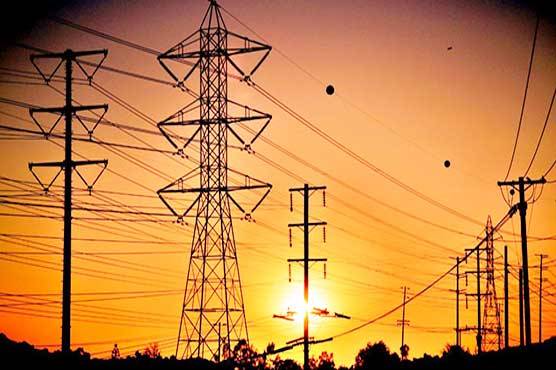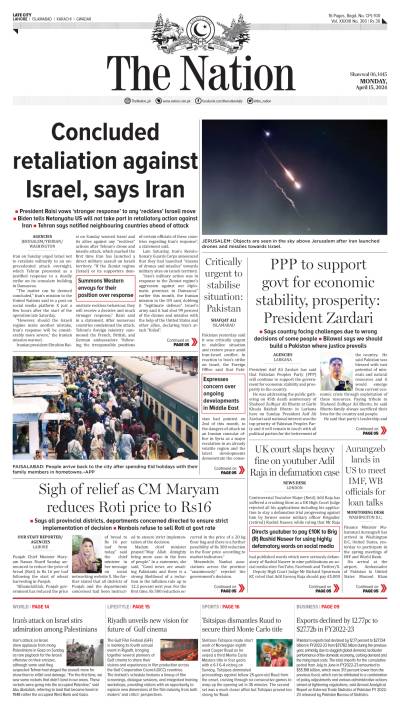ISLAMABAD - While blaming the unprecedented early heat wave and low hydel power generation for increased loadshedding in the country, Federal Minister for Water and Power Khawaja Asif has hoped that the current state of affairs will improve in two to three weeks.
At the same time, the minister admitted 4,554 megawatts (MW) of electricity shortfall in the country.
“The of power outages are genuine and it is being caused by the sudden increase in temperature, however, the loadshedding will be brought to three hours in urban and four hours in rural areas before or by the end April,” said Khawaja Asif while addressing a press conference here on Monday.
“The current power generation, as of April 3, from all sources, was 12,586 MW against a demand of 17,140 MW,” said the minister, who was flanked by Water and Power Secretary Yousaf Naseem Khokar and former secretary Mohammad Younus Dagha.
Asif said the loadshedding has nothing to do with the circular debt or the government tussle with independent power producers (IPPs).
“The IPPs generation has increased this year (till April) to 7,495 MW against 6,217 MW generated by them during the same period in 2016,” he said.
The minister said that climate change was playing a key role in increasing the temperature, as it was much higher this year as compared to the previous year.
“Temperature in Sukkur and Jacobabad in the last days of March and the first week of April reached to 42°C which was higher by 4 to 6 degrees than the previous years. Similarly, the temperature in Peshawar is 10°C higher (33°C this year against 23°C in 2016), Islamabad 8°C higher (33°C against 25°C) and Multan 5°C higher (38°C against 33°C) against the last year,” the minister said.
“The unprecedented heatwave and the low hydel generation has forced the NPCC and DISCOs to resort to unscheduled loadshedding, which is expected to be overcome in two to three weeks,” the minister said.
He said that 4,000MW to 5,000MW electricity will be added to the national grid through additional hydel generation, gas and oil plants like Nandipur and Guddu plants by the end of April which will help in controlling the power outages.
“We are expecting an increase of 1,000 to 1,500 MW in the hydel power generation, from current 2,000 MW to 3,000-3,500 MW as the snow melting starts from April 20,” the minister said.
Similarly, four plants of 1,200MW were on scheduled maintenance and they will be operational during the current month.
“The process of Nandipur gas conversion will be completed by the end of April,” the minister said. “We have been promised that the Nandipur power project will be able to generate 525 MW by the end of April,” he added.
The Guddu power plant will also increase generation by the end of April and May, the minister claimed.
The surge was also unprecedented with an increased demand of 2,319 MW for the month of April for this year as compared the same period of the previous year.
On April 1, 2016, the demand was 15,651MW as compared to 17,970MW by April 1, 2017.
The minister claimed that the power generation is still high than the previous year. “Our own generation companies (Gencos) are producing 2,836 MW while IPPs are producing 8,000 MW. The demand for electricity is 17,140 MW in the country,” he said.
“There are certain areas where load-shedding of up to 12 hours was being carried out and it will continue because these areas do not pay bills. Due to losses and the less recovery, we have de-electrified many regions, and removed transformers, in all provinces,” said the minister.
While talking about the performance of the power sector during the last over two years, the minister said that recoveries have improved from 88.6 per cent to 93.8 per cent while losses have been brought down from 17.9 percent to 19.1 percent.
“We have also fulfilled another promise that we will not only ensure availability of electricity but cheap power. Power tariff has come down for solar from Rs17 to Rs6 per unit; for the wind from Rs15 to Rs6.5 per unit, RLNG from Rs9.5 to Rs6.6 per unit and coal is expected to go down from Rs8.5 to Rs7 per unit,” the minister said.
Replying a question on the circular debt, Asif said that it stood at Rs385 billion. The IPPs have the claim of Rs161 billion and of this amount, Rs69 billion are under litigation and the remaining amount is only Rs92 billion,” he said.
While talking about Neelum Jhelum project, the minister said that it would start power generation in the summer of next year.
Regarding Sindh concerns over water cut, the minister said that some politicians were politicising the water issue and there was no anomaly in this regard.
“The IRSA has a full record of water storage and releases. All provinces have their representative in IRSA and current chairman of the authority is also from Sindh and if there is any anomaly, he should talk about it,” the minister said.






